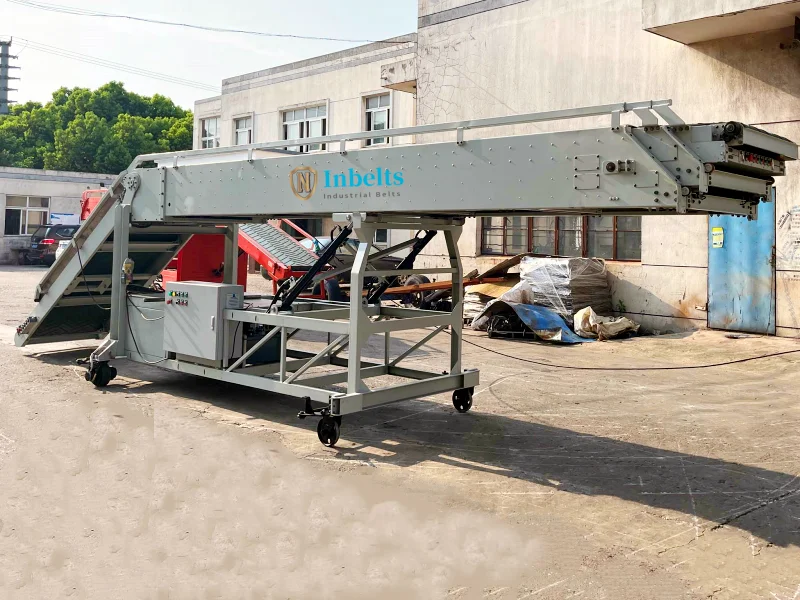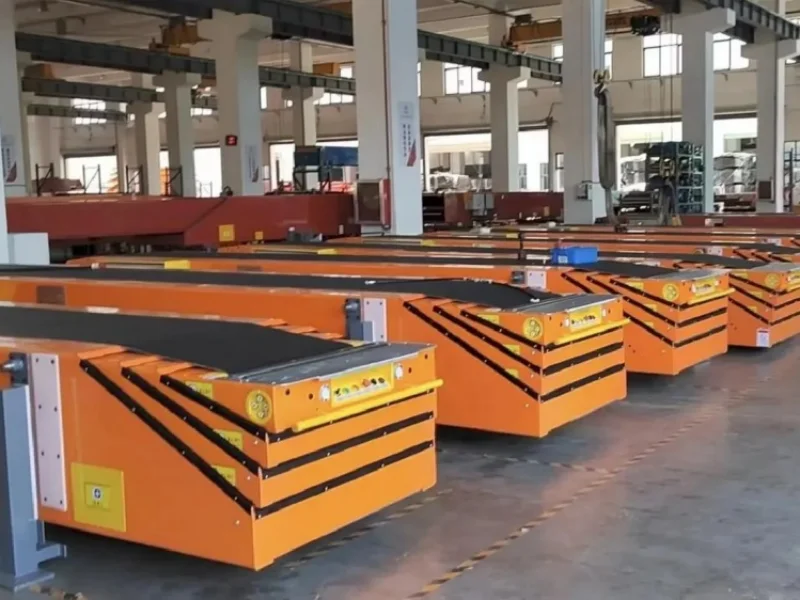
Telescopic Belt Conveyor Working Principle
A telescopic belt conveyor is an extendable conveyor system used primarily for loading and unloading trucks, trailers, containers, and warehouse operations. These conveyors are designed to improve efficiency, reduce labor efforts, and minimize loading/unloading times by extending directly into the vehicle or storage area. Here is a more detailed and enriched version of your article on the Telescopic Belt Conveyor Working Principle.
1. Structure and Components
A telescopic belt conveyor consists of multiple sections (typically 2 to 5) that can extend and retract like a telescope. The key components include:
- Base Conveyor Unit – The main structure that houses the drive system and supports the extending sections.
- Telescopic Sections – Extendable sections that allow the conveyor to reach deep into a truck or container.
- Conveyor Belt – A continuous moving belt that transports materials.
- Drive System – An electric motor that powers belt movement and extends/retracts the sections.
- Control System – A push-button or joystick-controlled panel to operate the conveyor.
- Hydraulic/Pneumatic Lifting System (Optional) – Allows height adjustment to align with different loading/unloading platforms.
2. Extension and Retraction Mechanism
- When the conveyor is activated, the telescopic sections extend outward in a controlled manner.
- The sections slide over each other using rollers or guides, pushed by a motorized drive system.
- Operators can extend or retract the conveyor using manual or automated controls, adjusting the reach as needed.
3. Material Transport Process
- As the belt runs continuously, goods are transported from one end to the other.
- Speed controls allow for smooth material handling and prevent damage to goods.
- The conveyor can work in both forward (loading) and reverse (unloading) directions.
4. Height Adjustment (Optional Feature)
- Some models have an adjustable height feature using hydraulic or pneumatic lifting systems.
- This ensures alignment with different truck or warehouse heights for efficient material transfer.
5. Retraction and Storage
- Once the operation is complete, the conveyor retracts into a compact form.
- This reduces storage space and keeps the working area clear.

Telescopic belt conveyors are essential in modern material handling, improving efficiency, safety, and cost-effectiveness. With customizable designs and advanced automation, these conveyors are a smart investment for businesses looking to optimize their logistics and warehousing operations. Would you like information on specific models or suppliers?


Leave Me Your Requirement!